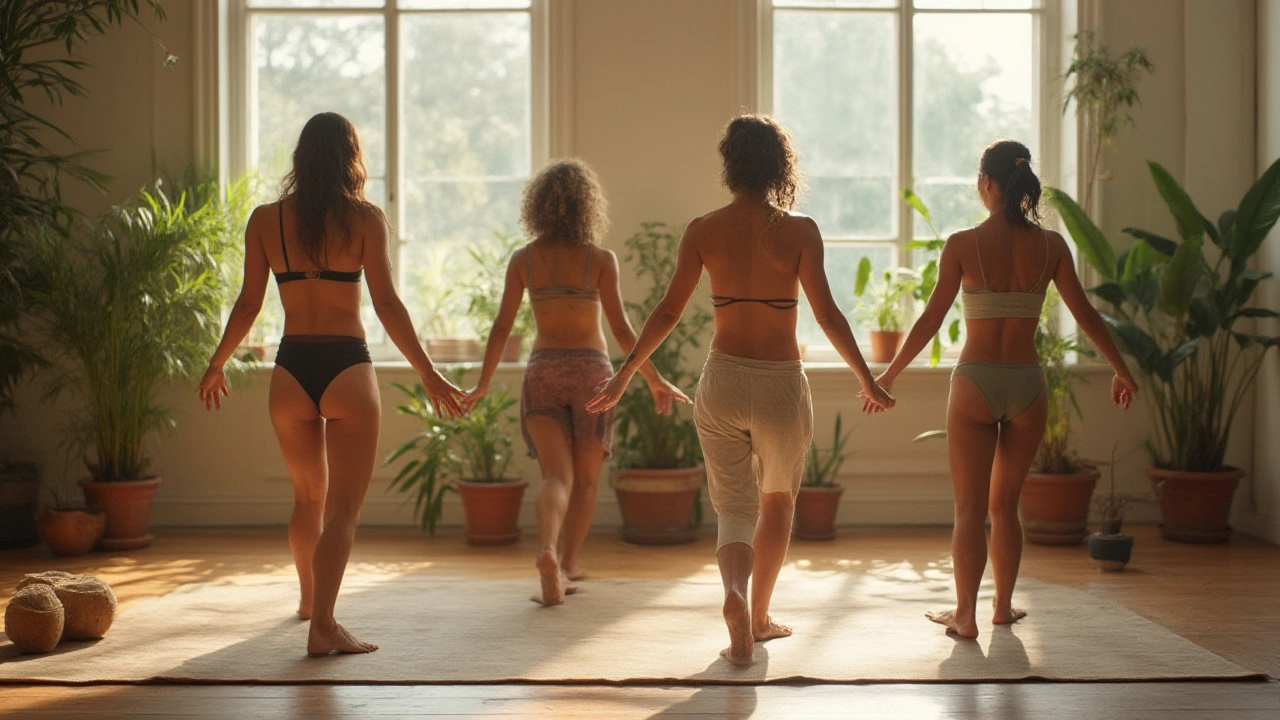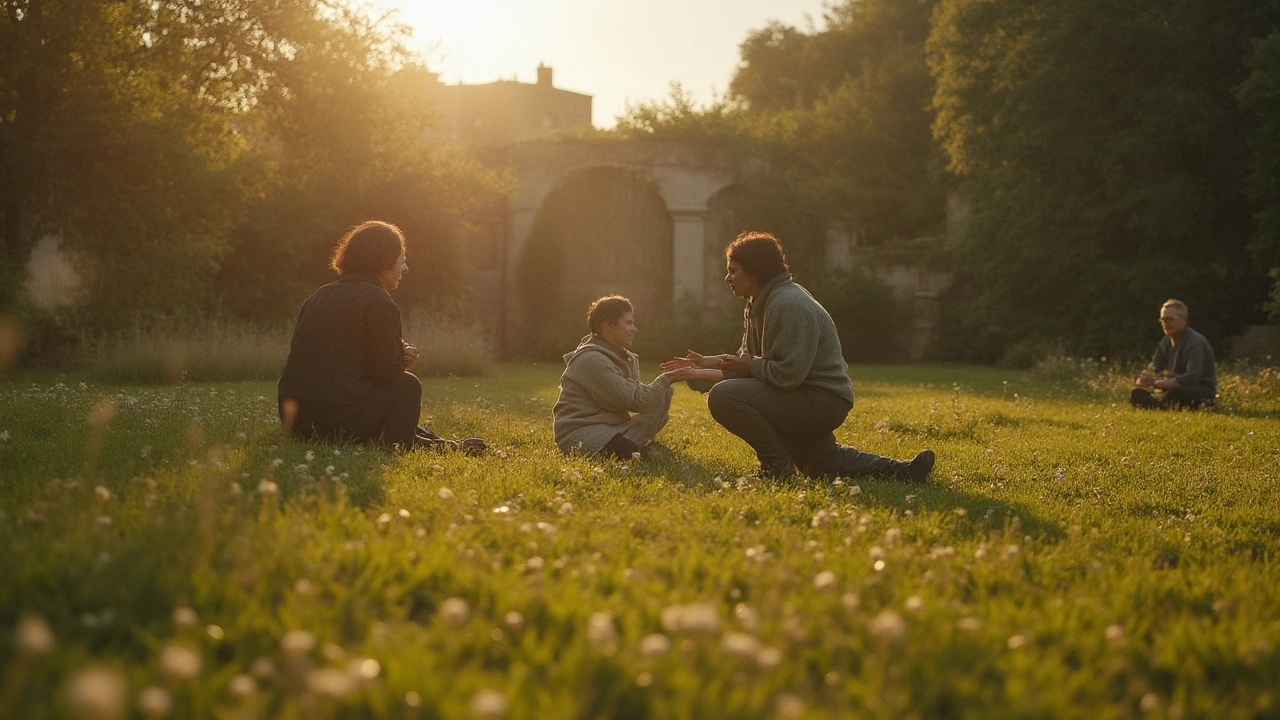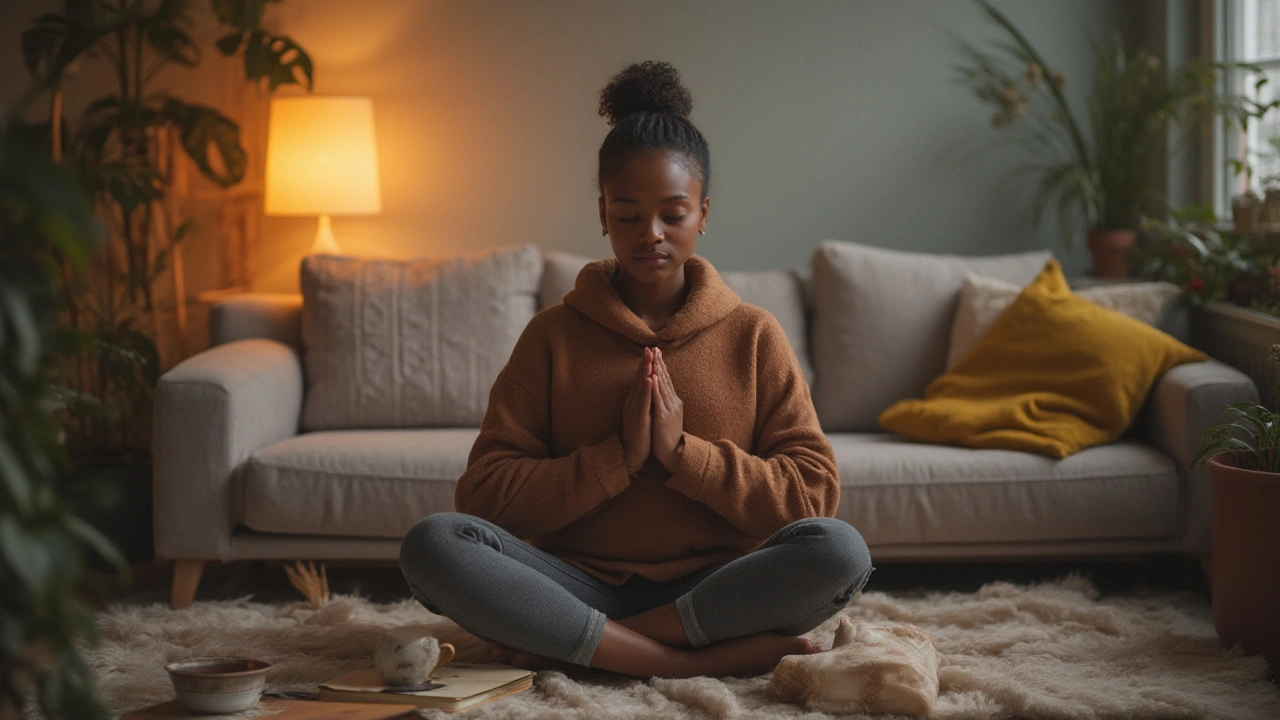Breema Bodywork: Discover Healing Through Holistic Movement
 Jul, 15 2025
Jul, 15 2025
You ever stumble upon something that’s both ancient and refreshingly new? That’s Breema. This is not your classic massage, nor is it only for spiritual seekers with yoga mats rolled under their arms. People in Sydney are chatting about it lately, but most folks are still a bit fuzzy on what Breema really is. One surprising thing—Breema’s roots reach into the mountains of the Caucasus, and while it’s been practiced in the West since the 1980s, it still feels like a secret club. But unlike many wellness trends, you don’t need to buy anything, chant anything, or contort your body into a pretzel. You just need a willingness to slow down and notice what’s happening inside your own skin.
What is Breema? Understanding the Practice
At its heart, Breema is a form of bodywork, but that barely scratches the surface. The practice combines touch, gentle movement, stretches, and focused presence—all guided by what practitioners call the “Nine Principles of Harmony.” The whole thing started in a small Kurdish village, and the practice only made its way west when Malouchek Mooshan moved to California and, together with Dr. Jon Schreiber, began to teach others in 1980. These days, Breema is done everywhere from the US to Europe, Japan, and right here in Australia, yet it’s still not mainstream. Unlike classic massage, Breema is most often performed fully clothed and on a padded floor—not a table. There’s a practitioner and a recipient, but also solo Breema exercises you can practice at home or even in the middle of a stressful day.
The real draw is in how it feels: people describe sensations ranging from deep relaxation to mind-blowing clarity. There’s not much talking. Movements are usually slow, rhythmic, and almost meditative. No oils, no fancy tools. Sessions mix stretches and muscle-brushing with rocking motions that lull your nervous system. Some folks describe Breema as a moving meditation. But if all that sounds a little abstract, know this—Breema’s main focus is on presence. Practitioners make sure they’re fully here and now, and that attitude rubs off on you. That stillness and awareness shift how you see yourself and the world.
The Nine Principles of Harmony: Foundations of Breema
Here’s where Breema steps apart from your average massage. It’s governed by nine principles, not dogma or rules, but more like reminders. Let’s walk through a few that stand out:
- Body Comfortable: You’re never forced into uncomfortable positions. If it hurts or strains, it’s not Breema.
- No Judgment: Forget measuring yourself or others. In Breema, it’s all about just being.
- Mutual Support: Both the giver and receiver benefit. Ever tried giving a massage and felt sore after? Not here.
- Full Participation: Presence is everything—you’re not zoning out but totally tuned in.
- Single Moment/Single Activity: Multitasking? Breema says “nah.” Do one thing, just now.

Breema Bodywork in Action: What to Expect In a Session
The first time you show up for Breema, expect it to be a bit different than the usual spa day. There’s no undressing, no dimmed lights with whale songs on repeat. You just wear loose, comfy clothes like sweats or yoga pants. The session usually starts with both of you sitting on mats, maybe sharing a few words about how you’re feeling or what you’re hoping for. Then the practitioner gets to work—rocking limbs, gently pressing or stretching your arms, legs, or back in slow, rhythmic movements. Every single movement they do, they do in a way that’s comfortable for them, too. That “mutual support” pops up again.
People often describe the feeling as being cradled, rocked, and gently reset. You’re constantly supported, never bent the "wrong" way. Many walk out of their first session feeling like their body just remembered something it forgot—a sense of balance, ease, or quiet inside. If you’re prone to zoning out or stress spirals, the sense of presence you pick up in a session often carries on outside the studio. The Nine Principles are quietly in action the whole time, and that shapes how the session flows.
For the science-minded: a 2020 review published in the International Journal of Therapeutic Massage & Bodywork noted that rhythmic movement and gentle touch can shift the balance in the autonomic nervous system, moving people away from “fight or flight” and toward deep relaxation. There’s not a mountain of formal clinical trials on Breema specifically, but lots of anecdotal reports—people noticing less pain, improved sleep, and less anxiety after even a few sessions. Here’s a quick look at reported effects, pulled together from a survey of practitioners and clients:
| Effect | Percent Noticing |
|---|---|
| Reduced Stress | 86% |
| Lengthened/Deeper Sleep | 63% |
| Pain Relief | 58% |
| Heightened Awareness | 72% |
Sessions last 40 to 60 minutes and end quietly, sometimes with silence, sometimes with a simple chat. There’s no “processing” or psychoanalysis. You just see what unfolds.
Benefits Beyond the Session: How Breema Changes Daily Life
Here’s where Breema sneaks into daily life. Sure, you probably want less back pain or more sleep, but the effects go deeper than that. People who try Breema talk about feeling “reconnected” with their bodies, or having an emotional reset. Ever find yourself doomscrolling late at night, buzzing with anxiety you can’t shake? Practicing a simple Breema movement—a gentle rocking of your shoulders, or a hand placed over your chest while focusing on your breath—can quiet that mental noise in minutes. You don’t even need a practitioner after you learn the basics.
Some therapists weave Breema into sessions for trauma, chronic pain, or anxiety—especially when traditional talk therapies hit a wall. Parents with restless kids sometimes teach them mini-Breema stretches as a bedtime routine. Even people with mobility challenges can adapt Breema practices for whatever their bodies can manage. The common thread tying it all together? Presence. Learning how it feels to be in your own skin without judgment or pressure.
There's no guarantee of instant transformation, but most people begin to notice subtle shifts—maybe less road rage in Sydney's traffic, or better focus at work. It can become a sort of reset button, helping you switch gears from chaos to calm without needing an hour-long bath or a trip to the Blue Mountains.

Getting Started: Learning and Practicing Breema
If you’re keen to try Breema, you’ve got a few paths. Hands-on sessions with a trained practitioner offer the quickest introduction. Check that they're certified through the Breema Center or an official branch—training usually requires over 500 supervised hours. In Sydney and Melbourne, you’ll find a small but growing number of practitioners holding group classes and private sessions. Expect a vibe closer to a supportive workshop than a silent massage studio. Group classes often include "Self-Breema" exercises—simple movements you can do on your own, like gentle twisting, pressing your feet into the floor, or slow hand sweeps. The moves look almost childlike, sometimes silly, but they sneak powerfully into your day.
Here’s a simple Self-Breema you can try at your desk:
- Sit with feet flat on the ground. Drop your arms to your sides.
- Take a breath, then lightly brush one arm with the opposite hand from shoulder down to fingers.
- Switch sides. Notice the sensation, warmth, and little shifts in how your body feels.
- Repeat as needed—especially during stressful Zoom calls.
If you want to dive deeper, the Breema Center offers online introduction courses. Some YouTube channels run simple demos, and there are a couple of well-reviewed books—like “The Essential Breema” by Dr. Jon Schreiber, who’s still active and teaching. People who stick with it often start sprinkling Breema principles into daily life without even thinking—pausing to notice their posture, deciding not to judge themselves for late-night snacks, or giving themselves space to slow down.
Sure, there are dozens of bodywork styles floating out there. But what hooks people about Breema is its zero-pressure approach and how it manages to feel practical and philosophical at the same time. Give it a shot—you might find that quiet, present part of yourself that’s been hiding under a pile of to-dos.
